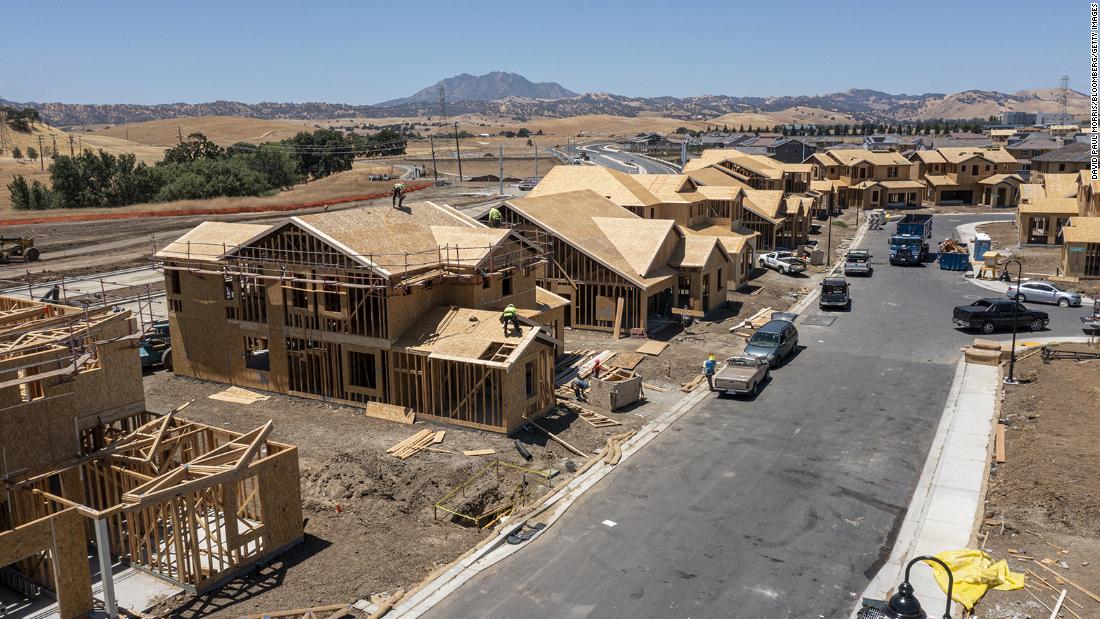
Yet Stuart Miller, Lennar’s executive chairman, struck an extremely cautious tone when describing the housing environment. This is a “complicated moment in the market,” he said in an earnings release.
“The weight of a rapid doubling of interest rates over six months, together with accelerated price appreciation, began to drive buyers in many markets to pause and reconsider,” Miller said, adding that Lennar “began to see these effects after quarter end.”
Rising rates dampening, but not killing, demand for homes
Miller said “the Fed’s stated determination to curtail inflation through interest rate increases and quantitative tightening have begun to have the desired effect of slowing sales in some markets and stalling price increases across the country.” He added that “the relationship between price and interest rates is going through a rebalance.”
Some experts are hopeful that a further slowdown in housing won’t wreak havoc on the economy the way the bursting of the housing bubble and subprime mortgage meltdown did in 2008.
“Banks are in much better shape now, and they are not giving out loans to people with no credit or bad credit,” said Michael Sheldon, chief investment officer with RDM Financial Group at Hightower. “If there is a recession, the impact on housing could be mild. There are not as many imbalances as we had before.”
Home prices have continued to spike in many markets as well, despite the broader market and economic turmoil.
The National Association of Realtors said in a report Tuesday that the median home price in May topped $400,000 for the first time, hitting a record of $407,600. That’s up nearly 15% from a year ago.
But existing home sales fell for the fourth straight month, according to NAR, dipping 3.4% from April.
Housing slowdown … but not a crash
“Further sales declines should be expected in the upcoming months given housing affordability challenges from the sharp rise in mortgage rates this year,” said NAR chief economist Lawrence Yun.
“Nonetheless, homes priced appropriately are selling quickly and inventory levels still need to rise substantially … to cool home price appreciation and provide more options for home buyers,” Yun added.
But that may not mean that prices will suddenly plunge — demand for homes is still holding up reasonably well. The issue is affordability.
“We think the housing market is lining up to mimic the late 70s to early 80s when price growth skidded to a halt but did not crash,” Brett Ewing, chief market strategist with First Franklin Financial Services, said in a report.
Still, many current owners who are selling a property in order to trade up and buy another home are able to get deals done. So although the housing market may be starting to show some cracks, the foundation remains relatively strong. It may take a much bigger leap in mortgage rates to scare prospective buyers away for good.
“The average property sat on the market for just 16 days in May, which marks a new record low for this measure,” Jefferies economists Aneta Markowska and Thomas Simons said in a report Tuesday following the existing home sales data release.
“This suggests that supply is still scarce and any new inventory put on the market is still moving very quickly,” they added.
Up next
Federal Reserve Chair Jerome Powell testifies on the state of the US economy before the Senate Banking Committee. The hearing kicks off at 9:30 a.m. ET.
Coming tomorrow: Attention will remain on Powell as he moves over to the House Financial Services Committee.
— CNN Business’s Anna Bahney contributed to this story.

